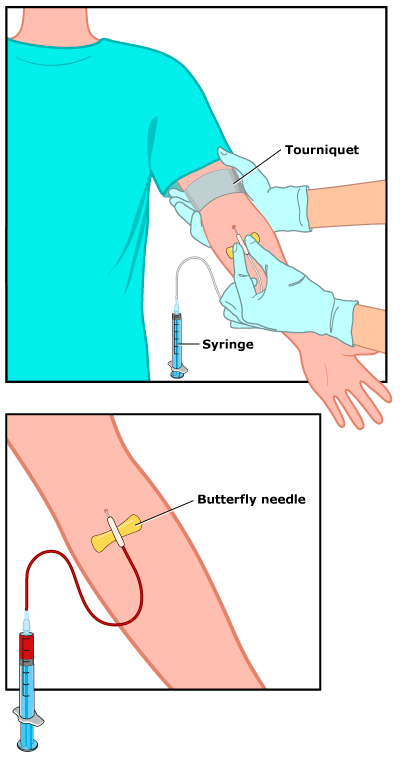Why They Draw Blood in Pregnancy Test
Blood Test: Immunoglobulin E (IgE)

What It Is
An immunoglobulin E (IgE) test measures the blood level of IgE, one of the five subclasses of antibodies. Antibodies are proteins made by the immune system that attack antigens, such as bacteria, viruses, and allergens.
IgE antibodies are found in the lungs, skin, and mucous membranes. They are associated mainly with allergic reactions (when the immune system overreacts to environmental antigens such as pollen or pet dander) and parasitic infections.
Why It's Done
The IgE test is often performed as part of an initial screen for allergies. Symptoms of allergies may include hives, itchy eyes or nose, sneezing, nasal congestion, tight throat, and trouble breathing. Symptoms may be seasonal (as with allergies due to pollen or molds) or year-round (as with food allergies). They can range from mild to severe, depending on the child and the allergy.
IgE levels may also be elevated in children with parasitic infections.
Preparation
No special preparations are needed for this test. On the day of the test, having your child wear a T-shirt or short-sleeved shirt can make things easier for the technician drawing the blood.
The Procedure
A health professional will usually draw the blood from a vein. For an infant, the blood may be obtained by puncturing the heel with a small needle (lancet). If the blood is being drawn from a vein, the skin surface is cleaned with antiseptic, and an elastic band (tourniquet) is placed around the upper arm to apply pressure and cause the veins to swell with blood. A needle is inserted into a vein (usually in the arm inside of the elbow or on the back of the hand) and blood is withdrawn and collected in a vial or syringe.
After the procedure, the elastic band is removed. Once the blood has been collected, the needle is removed and the area is covered with cotton or a bandage to stop the bleeding. Collecting blood for this test will only take a few minutes.


What to Expect
Either method (heel or vein withdrawal) of collecting a sample of blood is only temporarily uncomfortable and can feel like a quick pinprick. Afterward, there may be some mild bruising, which should go away in a day or so.
Getting the Results
The blood sample will be processed by a machine, and the results are commonly available within a few days.
In some cases, the results of the IgE test will allow your doctor to make a diagnosis and prescribe treatment. More often, though, further testing (such as a skin test or allergen-specific IgE blood test) may be necessary to determine what particular allergen is causing the allergy.
Risks
The IgE test is considered a safe procedure. However, as with many medical tests, some problems can occur with having blood drawn, such as:
- fainting or feeling lightheaded
- hematoma (blood accumulating under the skin causing a lump or bruise)
- pain associated with multiple punctures to locate a vein
Helping Your Child
Having a blood test is relatively painless. Still, many kids are afraid of needles. Explaining the test in terms your child can understand might help ease some of the fear.
Allow your child to ask the technician any questions he or she might have. Tell your child to try to relax and stay still during the procedure, as tensing muscles and moving can make it harder and more painful to draw blood. It also may help if your child looks away when the needle is being inserted into the skin.
If You Have Questions
If you have questions about the IgE test, speak with your doctor.
Reviewed by: Yamini Durani, MD
Date reviewed: September 2014
Why They Draw Blood in Pregnancy Test
Source: https://www.rchsd.org/health-articles/blood-test-immunoglobulin-e-ige/
0 Response to "Why They Draw Blood in Pregnancy Test"
Post a Comment